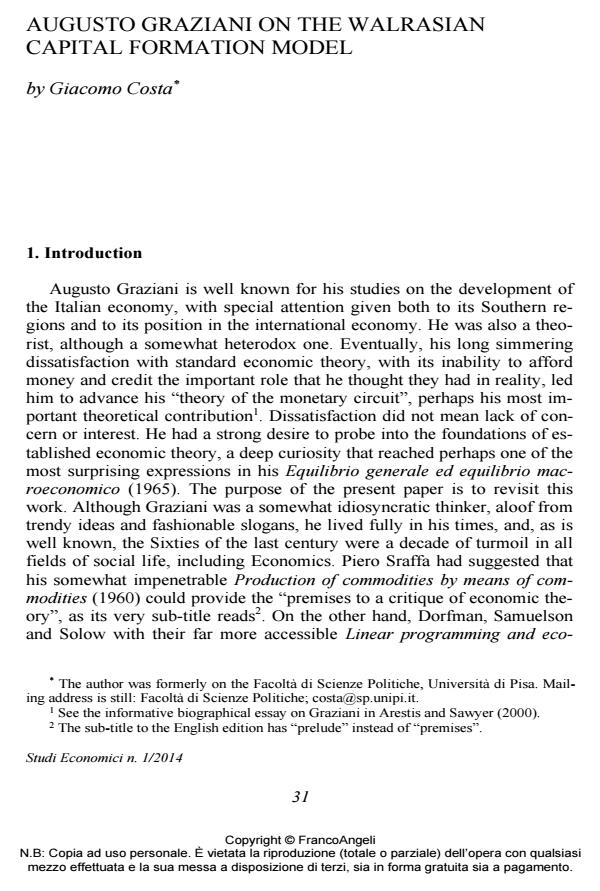Augusto Graziani on the walrasian capital formation model
Journal title STUDI ECONOMICI
Author/s Giacomo Costa
Publishing Year 2015 Issue 2014/112
Language English Pages 22 P. 31-52 File size 94 KB
DOI 10.3280/STE2014-112003
DOI is like a bar code for intellectual property: to have more infomation
click here
Below, you can see the article first page
If you want to buy this article in PDF format, you can do it, following the instructions to buy download credits

FrancoAngeli is member of Publishers International Linking Association, Inc (PILA), a not-for-profit association which run the CrossRef service enabling links to and from online scholarly content.
In the Sixties of the last century there was in Italy a re-kindling of interest for Walrasian theory. Several economists wrote on it, expounding opposing opinions. This partly reflected the hectic ideological climate of that decade, and Graziani could not but be influenced by it. Yet his book Equilibrio generale ed equilibrio macroeconomico testifies to his deep intellectual curiosity and searching attitude. The key problem was the consistency of the Walrasian capital formation model. The dominant opinion was that of over-determinacy. Graziani opted for under-determinacy. He provided two arguments, the first of which was based on a misinterpretation of Walras’ Law, the second, an ingenious one, would have led, if properly completed, to determinacy. His criticisms of over-determinacy are penetrating and constructive: he suggested a promising dynamic over-determinacy thesis which integrates the markets for newly produced and for second hand capital goods.
Keywords: Walrasian capital formation model; Italian Economics; Walrasian vs Austrian capital theory; capital in general equilibrium; indeterminacy, determinacy, over-determinacy in the Walrasian capital model; dynamic over-determinacy in the Walrasian capital formation model; expectations in the Walrasian capital formation model.
Jel codes: B13, D50, D92, E13
- The modern Italian debate on the Walrasian theory of capitalization (1960-1971) Giovanni Michelagnoli, in HISTORY OF ECONOMIC THOUGHT AND POLICY 1/2021 pp.131
DOI: 10.3280/SPE2021-001006
Giacomo Costa, Augusto Graziani on the walrasian capital formation model in "STUDI ECONOMICI " 112/2014, pp 31-52, DOI: 10.3280/STE2014-112003